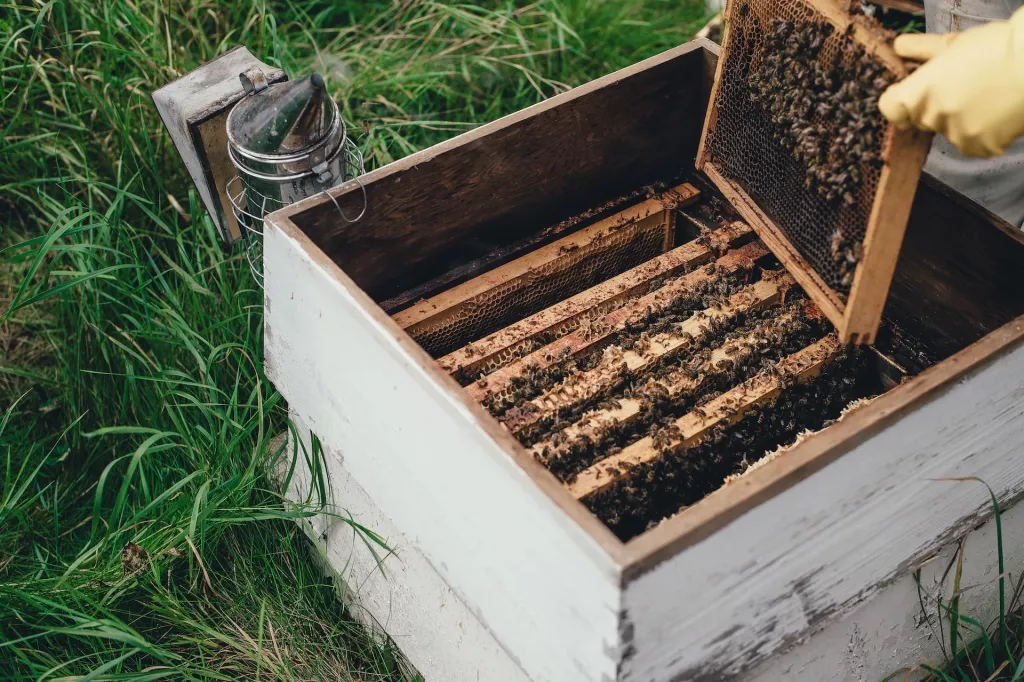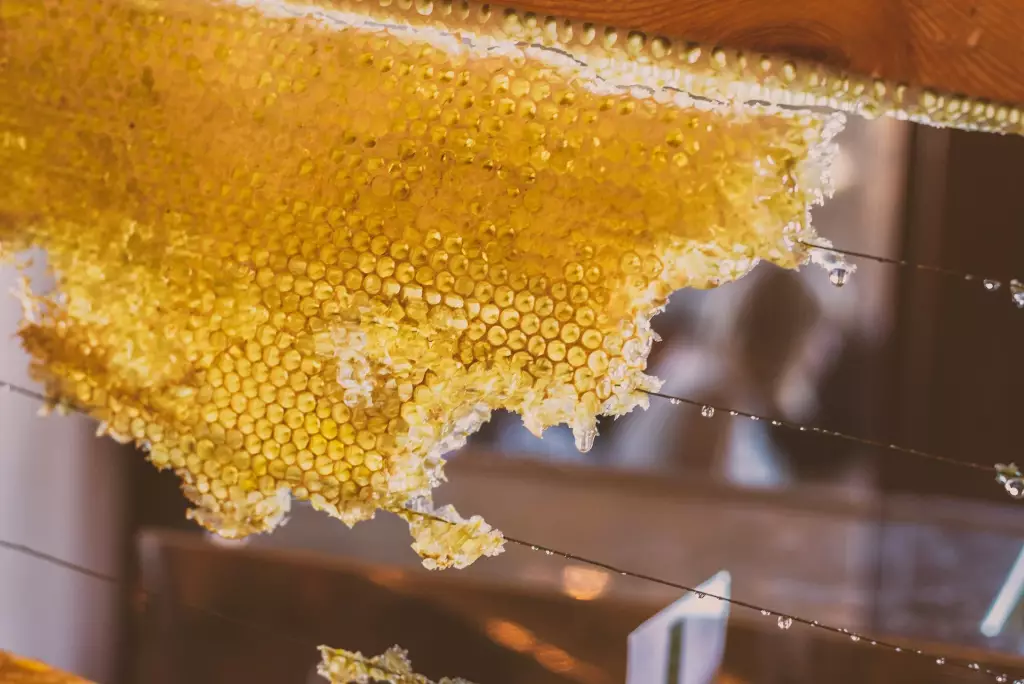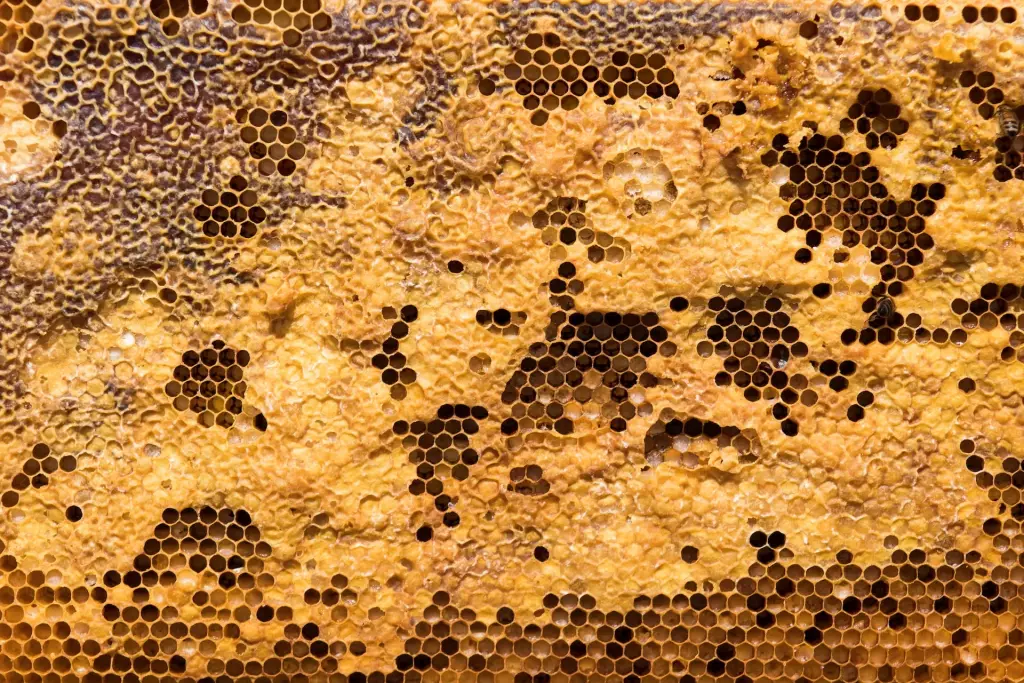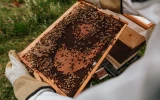How Long Does a Bee Hive Last? - Longer Than You Think
Like any inhabited space, hives can get too messy to live in too. Find out when you need to change hives and the best practices surrounding comb rotation here!
Manmade beehives need to have its frames and foundations replaced in rounds from the fourth year onwards, unless you notice a buildup of black wax or you've lost an entire colony. Replace frames with black wax, & dispose of the dead colony's former hive. This removes any chemical build-up & debris inside the structure.
While beehives are serviceable for an indefinite period of time, switching out the frames in alternate order is the key to helping honeybees thrive in a healthy and secure environment. This can be hard to monitor, especially as you continue your journey in beekeeping. I'll explain how you can optimize your hives so that all your colonies thrive.
Summary
- Manmade hives should be replaced every four years. Alternate and space out the replacement of frames so honeybees are not overly burdened by the work of creating new honeycomb.
- Honeybees naturally collect and deposit debris in the hive throughout their short lifespans. In some cases, you may need to replace frames sooner if the wax has turned black because this is an indication that there is too much debris.
- Honey supers only need to be changed once every ten years.

On this page:
The Importance of Comb Rotation
Old brood comb is a magnet for all sorts of contaminants: heavy metals, fungi, pesticides, bacteria, and more. Cells in old brood comb also start shrinking over time because of the burden of carrying all these materials, alongside the fecal matter and cocoon silk discarded by new honeybees. This has a direct effect on your little workers: colonies that have to live in a hive with plenty of old, dark, and heavy comb will raise smaller, fewer bees.
Comb rotation, which just refers to removing old comb and replacing it with a new one, gives colonies the opportunity to rebuild on a fresh slate. This is a fairly new development in beekeeping, but it's one that is vital to the modern colony's survival. Honeybees are relentless in their search for nectar and pollen. They will probe a variety of different surfaces and flora. With the creation of new and unfriendly chemical substances in the past few years, old comb is no longer a mark of experience. It can be a death sentence for an experienced colony.

When Should I Change Hives?
Regardless of the type of hive you are using, start replacing frames and foundation around the fourth year and use a checker boarding method as you go. This means that you should only replace every other frame in one year, so that the colony will not struggle to comb out all the frames with new wax. After you finish the first round, wait until the bees have managed to rebuild their hives around the new frames before going back in to replace the remaining set in the next year.
If you are a beekeeper who lives in an area with multiple crops each year, particularly ones that are exposed to a high degree of chemicals, then consider rotating combs out more often.
To help keep track of frame management, use a permanent marker and write the year on the top bar of the frame. The only times you need to switch out frames before the mark is when the wax has become a deep black color. This is an indication that there is too much debris and fecal material trapped within the sticky layers.
Whenever you're exchanging frames and foundation, it is strongly recommended that you provide supplemental feeding. Give your honeybees a 1:1 sugar-water ratio. This will give them the energy to make more wax and comb out their new frames.
If you have recently experienced a chemical-related colony death, then you cannot reuse the frames and foundation. You will need to invest in a new hive completely.
Should I Change Out the Honey Supers?
Honey supers are a part of manmade beehives dedicated to collecting honey. They only need to be changed every ten years. These boxes give the space bees need to ripen and store their honey and it is placed on top of the hive. In one year, they only need to be used for three or four months, so you won't need to switch out honey super frames and its foundation as much.
What Do I Do With Old Black Comb?
Most beekeepers melt down the comb to collect beeswax. However, this does not always have good yield and the process also generates a lot of foul odors. The low yield and bad smells are caused by all the stains, propolis, and pupal cocoons.
Instead, consider using old comb as a swarm lure. Brood wax, in small amounts, are incredibly attractive to scouting bees. You can place one frame of old comb into a swarm trap to increase your chances of attracting a swarm.
Another way to make use of old comb is to draw out pests like wax moths. They devour brood wax kept in a dark location. The presence of old comb will distract them from interfering with the work at the new hive.
How Do Bees Build Hives?
In the wild, bees strategically look for hollowed-out tree trunks, rock crevices, and even inside snail shells or plant stems if needed. They will look for anywhere that can offer them enough protection from nature's elements. Once they do, they start constructing from the top down.
The worker bees start by covering the hive wall with a thin layer of propolis. Propolis will continue to be used throughout construction to protect the colony from germs and intruders. After, the bees secrete wax and chew it until it becomes more malleable. This will be used to form individual hexagon cells, where they will store nectar, honey, pollen, eggs, water and larvae.
The topmost sections of the hive will contain honey, followed by the pollen, worker brood, and then the drone bee cells. The queen bee's cells are located at the very bottom of the structure. Each hive has only one entrance and this is defended heavily by guard bees.
Wild versus Manmade Beehives
Bees have been around for millions of years, but breakthroughs in beekeeping have only made manmade hives available in the past century. There are marked differences between the comb produced in manmade hives and natural hives. It was found that colony density is much lower in natural hives and that bees were more vulnerable to changes in weather, especially rain.
Modern beehives like the langstroth and warre frames give honeybees an opportunity to thrive in their colonies. They have higher yield and better honey quality. As long as the beekeeper is careful to keep inspections to a minimum, implement natural methods of pest control, and implement best industry practices, manmade frames are a great way to contribute to saving one of the planet's most vital creatures in the ecosystem.

Why Does a Hive Look Like That?
Bees are instinctively compelled to create their hives in a hexagonal pattern. Mathematically, it is the best shape to hold the most amount of honey with minimal effort. Hexagon cells allow bees to work at maximum efficiency and store plenty of honey for the colony. The "curved" shape of the hexagon also eliminates unused space and lets cells be placed right next to each other.
The hive eventually fuses together because of the heat generated by honeybees throughout the construction process. It melts the comb, flattens the cell walls, and solidifies the hexagons.
How Do Bees Maintain Hives?
Bees are capable of carrying out detailed and complex functions because they live incredibly orderly lives. There is a strict hierarchy and system followed by the female workers, the male drones, and the queen. The workers are responsible for all of the work around the hive, the drones' sole purpose is to mate with the queen, and the queen lays eggs and reinforces the working cycle of the hive.

